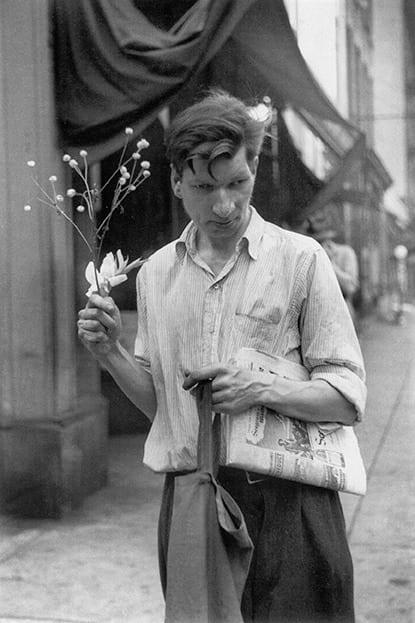
Louis Faurer American, 1916-2001
Printed by Chuck Kelton, 1980-81.
.
Paper: 35.4 x 28 cm / 14 x 11 in
.
In the hustle of 1948 New York City, Louis Faurer found poetry in the shadows. His photograph "Eddie" captures more than a moment—it crystallizes the tender melancholy of postwar urban life.
Standing somewhere along Third Avenue, Eddie emerges from Faurer's lens not as a mere subject but as a vessel for the photographer's profound empathy toward the city's forgotten souls.
Faurer, who had arrived in New York just a year earlier from Philadelphia, possessed an extraordinary ability to locate grace in the overlooked corners of metropolitan existence.
His camera sought what he called "people who are grateful for life, people who forgive whose doubts have been removed"—and in Eddie, he discovered exactly that.
This was Faurer's New York: not the gleaming advertisements or towering monuments, but the quiet figures who moved through Times Square and its surrounding streets with stories etched in their postures.
Working alongside Robert Frank, who would later praise Faurer's "eye on the pulse of New York City," the photographer developed a visual language that spoke to urban loneliness and resilience simultaneously.
The photograph belongs to that remarkable period when Faurer was discovering his voice as an artist, experimenting with reflection, blur, and the marked graininess that would become his signature.
Eddie stands as both individual and archetype—a single person whose presence illuminates the broader human condition of a city rebuilding itself after war.
In capturing Eddie, Faurer achieved what the greatest street photographers accomplish: the transformation of a fleeting encounter into enduring art that speaks across decades about what it means to exist, to persist, to find hope in the urban labyrinth of modern life.